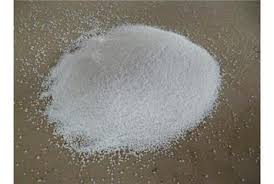
Exploring the Benefits and Uses of Builders Lime in Construction and DIY Projects
The Importance and Applications of Builders Lime
Builders lime, also known as hydrated lime or calcium hydroxide, plays a critical role in construction and various other industries due to its versatile properties. This fine, dry powder is produced by the controlled slaking of quicklime, which is processed from limestone. The use of builders lime has stood the test of time, continuing to be a staple in construction, soil stabilization, and even environmental applications.
Composition and Properties
Chemically, builders lime is represented by the formula Ca(OH)₂, and it possesses several useful characteristics. It is alkaline in nature, which means it can neutralize acids, making it effective in various chemical processes. Builders lime is highly reactive, particularly when it comes in contact with water, resulting in a significant increase in temperature. This property is crucial in many applications, including mortar formulation and soil stabilization.
Applications in Construction
One of the primary uses of builders lime is in the formulation of mortars and plasters
. When mixed with sand and water, lime-based mortars create a flexible and durable bonding material for masonry work. Unlike cement, which can be rigid and prone to cracking, lime mortars allow for movement within the structure, accommodating changes in temperature and humidity. This property helps to improve the longevity and durability of masonry walls.Moreover, builders lime is used in whitewashing and finishing on buildings, providing not only aesthetic appeal but also protection against weathering. The alkaline nature of lime helps to kill mold and fungi, making it a suitable choice for preserving the integrity of building materials.
builders lime

Soil Stabilization
Builders lime is also widely used in civil engineering for soil stabilization. When lime is added to clay-rich soils, it induces a chemical reaction that alters the soil's properties, enhancing its load-bearing capacity and reducing plasticity. This process is particularly beneficial in road construction and earthworks, where stable foundations are essential. By stabilizing the soil, builders lime helps to prevent erosion and increase the lifespan of infrastructure.
Environmental Benefits
In addition to its construction and engineering applications, builders lime offers environmental benefits. It plays a role in wastewater treatment processes, where it helps to neutralize acidic waters and precipitate heavy metals, contributing to cleaner effluents. Furthermore, lime is used in air pollution control systems to reduce sulfur dioxide emissions, making it a valuable tool in promoting cleaner air.
Conclusion
Builders lime continues to be an indispensable material across various sectors. Its ability to enhance building materials, stabilize soils, and contribute to environmental protection underscores its importance in modern construction practices. As the industry shifts toward sustainable practices, the use of builders lime aligns well with the pursuit of eco-friendly solutions. In conclusion, recognizing the multifaceted applications of builders lime can lead to more innovative and sustainable building and engineering strategies, ensuring its relevance for years to come. Whether in ancient structures or modern skyscrapers, builders lime remains a foundational element in our built environment.
Share
-
Vermiculite Wholesale – Premium Quality, Bulk Supply & Competitive PricingNewsJun.10,2025
-
Premium Glass Pebbles Custom Glass Pebbles Factory & OEM Manufacturer Reliable Custom Glass Pebbles FactoriesNewsJun.10,2025
-
Expert Custom Zeolite Producers Manufacturers & FactoriesNewsJun.10,2025
-
Custom Glow in the Dark Beads High-Quality Custom ManufacturersNewsJun.10,2025
-
China Ceramsite Balls Factory - Lightweight & Durable Media Solutions ManufacturerNewsJun.09,2025
-
Custom Matte Mica Powder Manufacturers High Quality & AffordableNewsJun.09,2025






